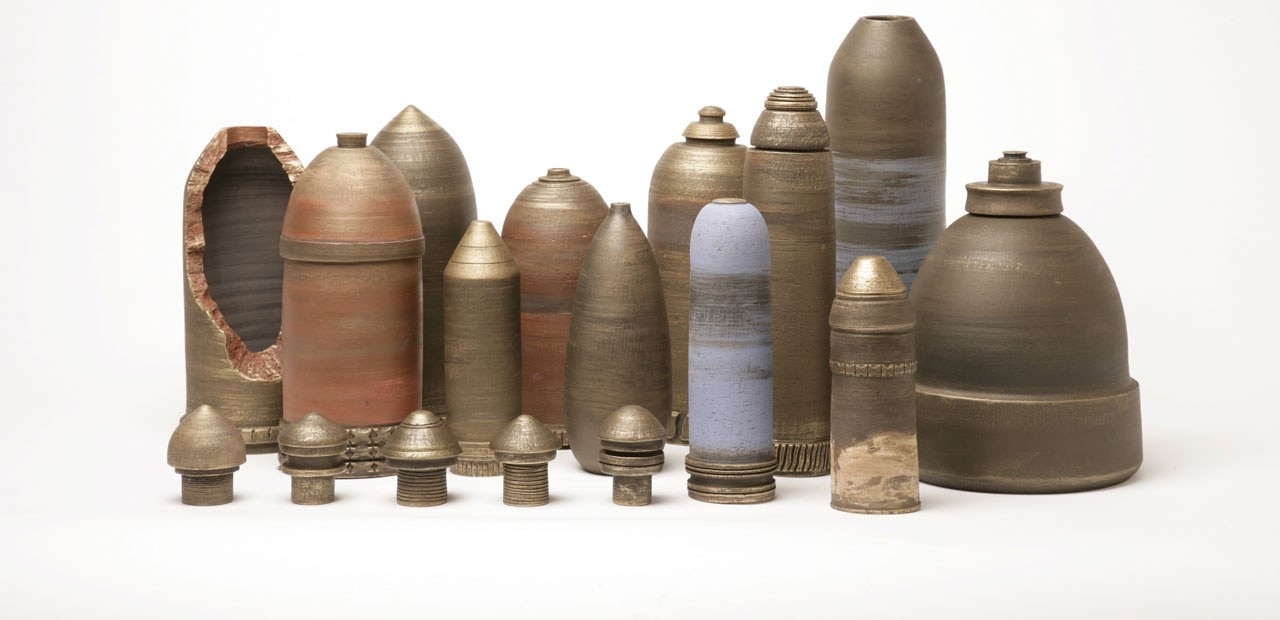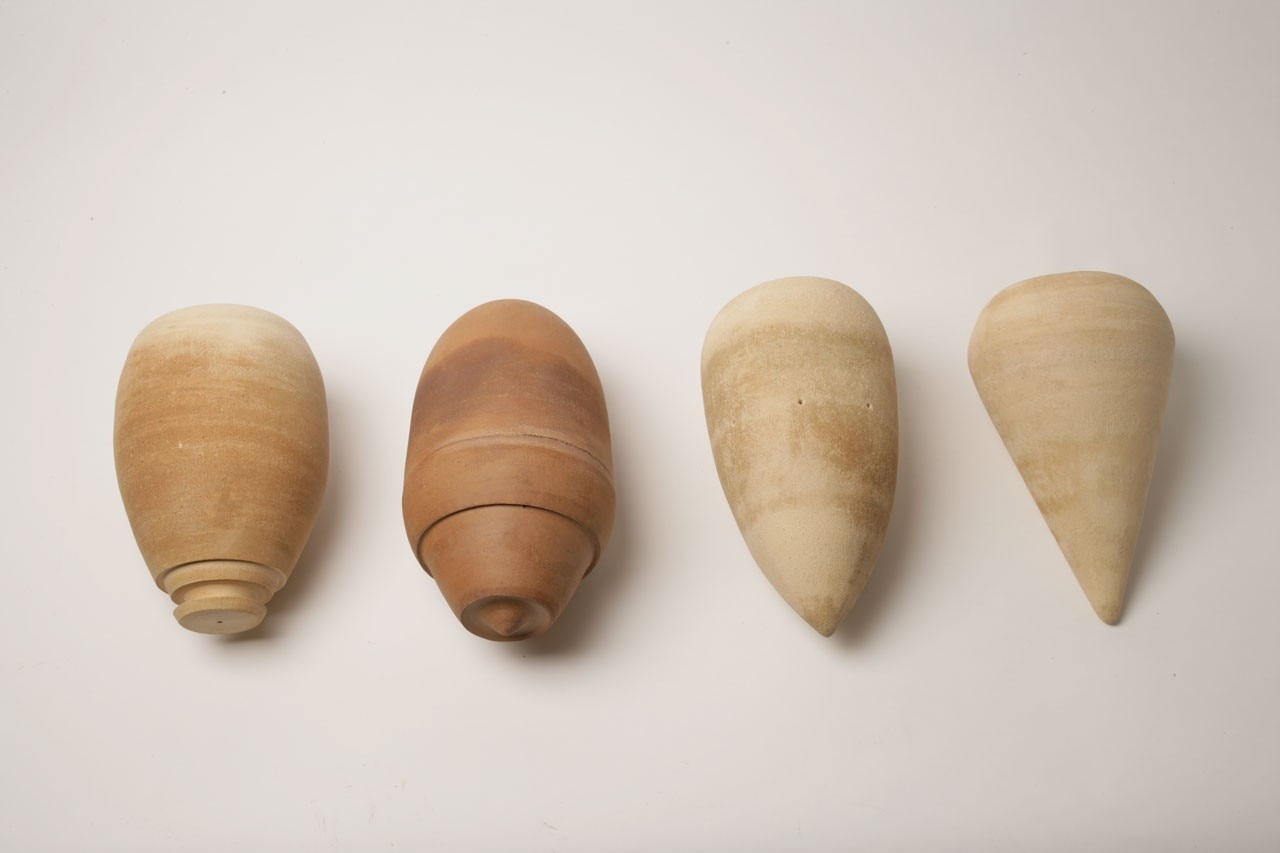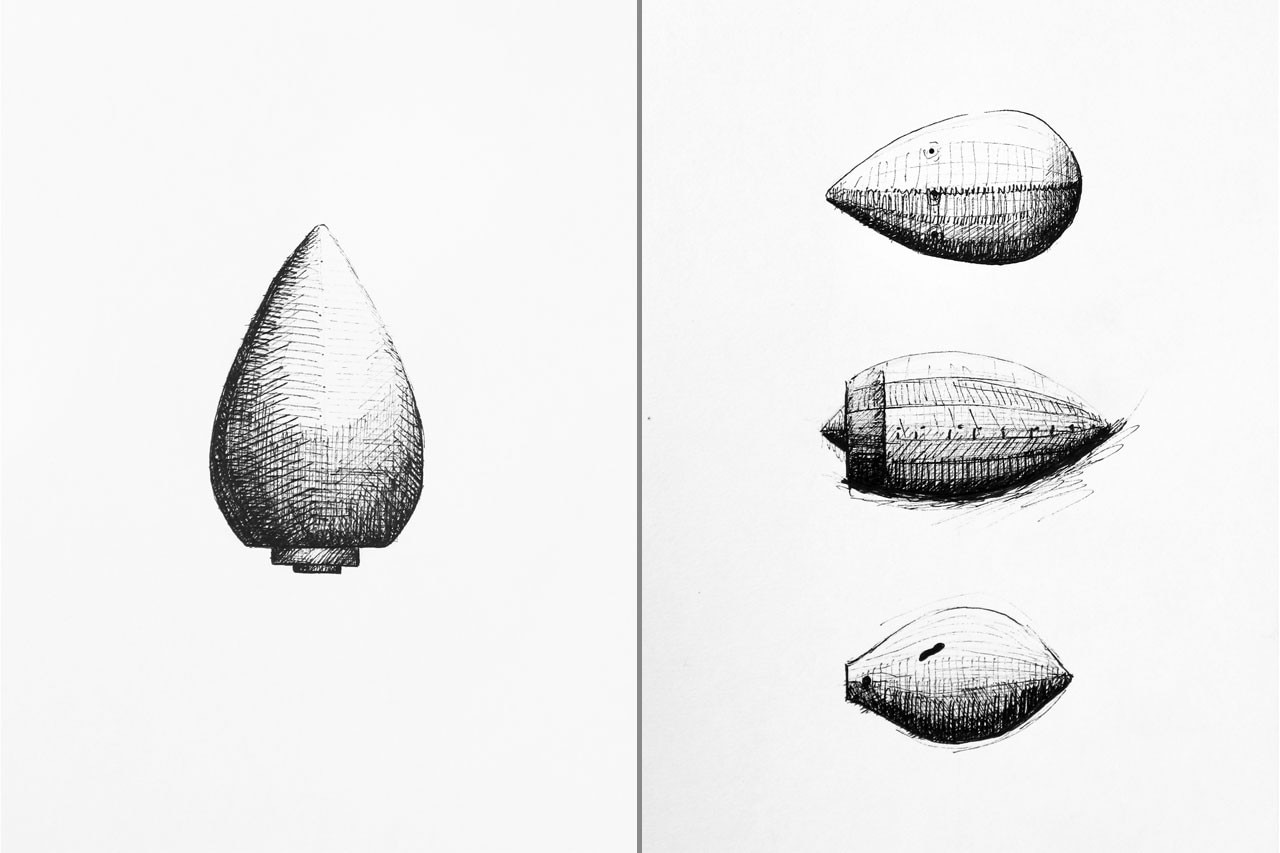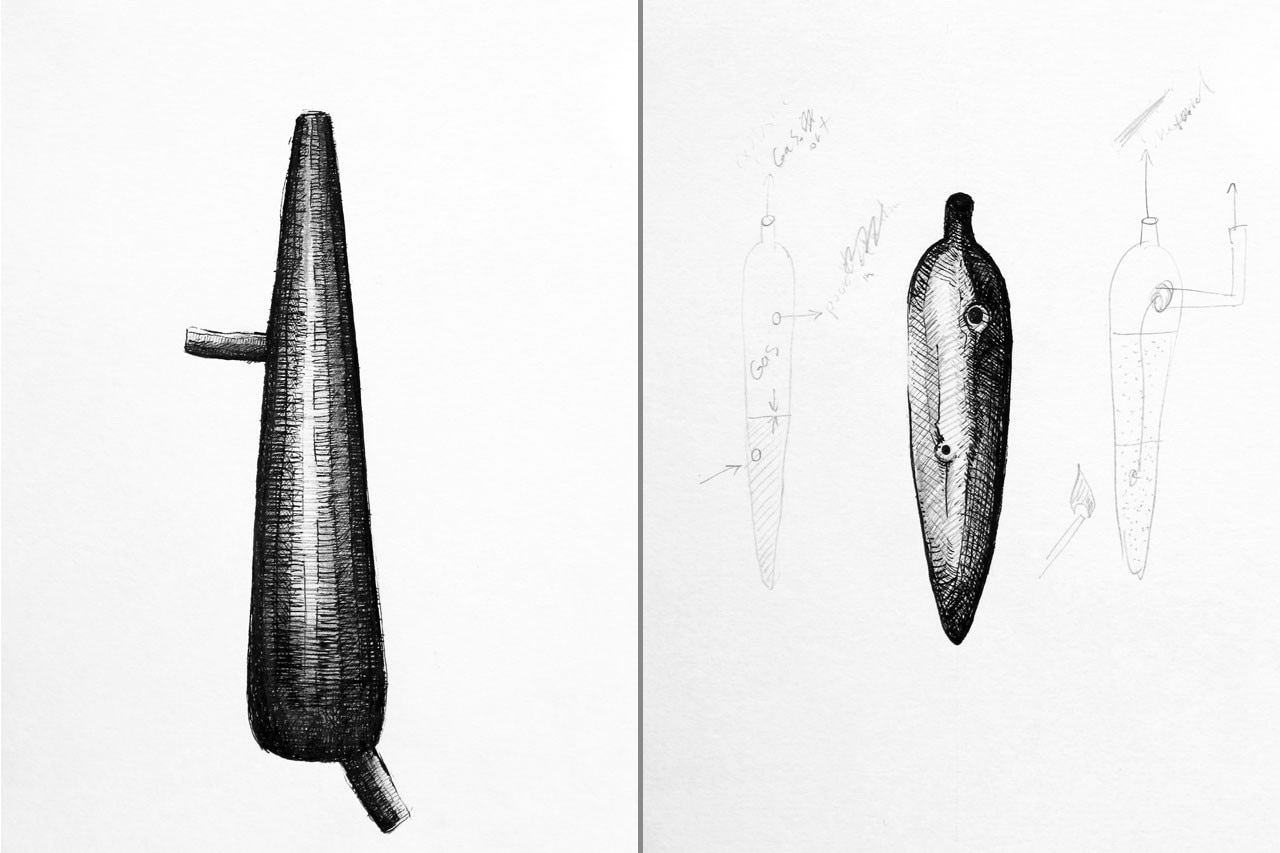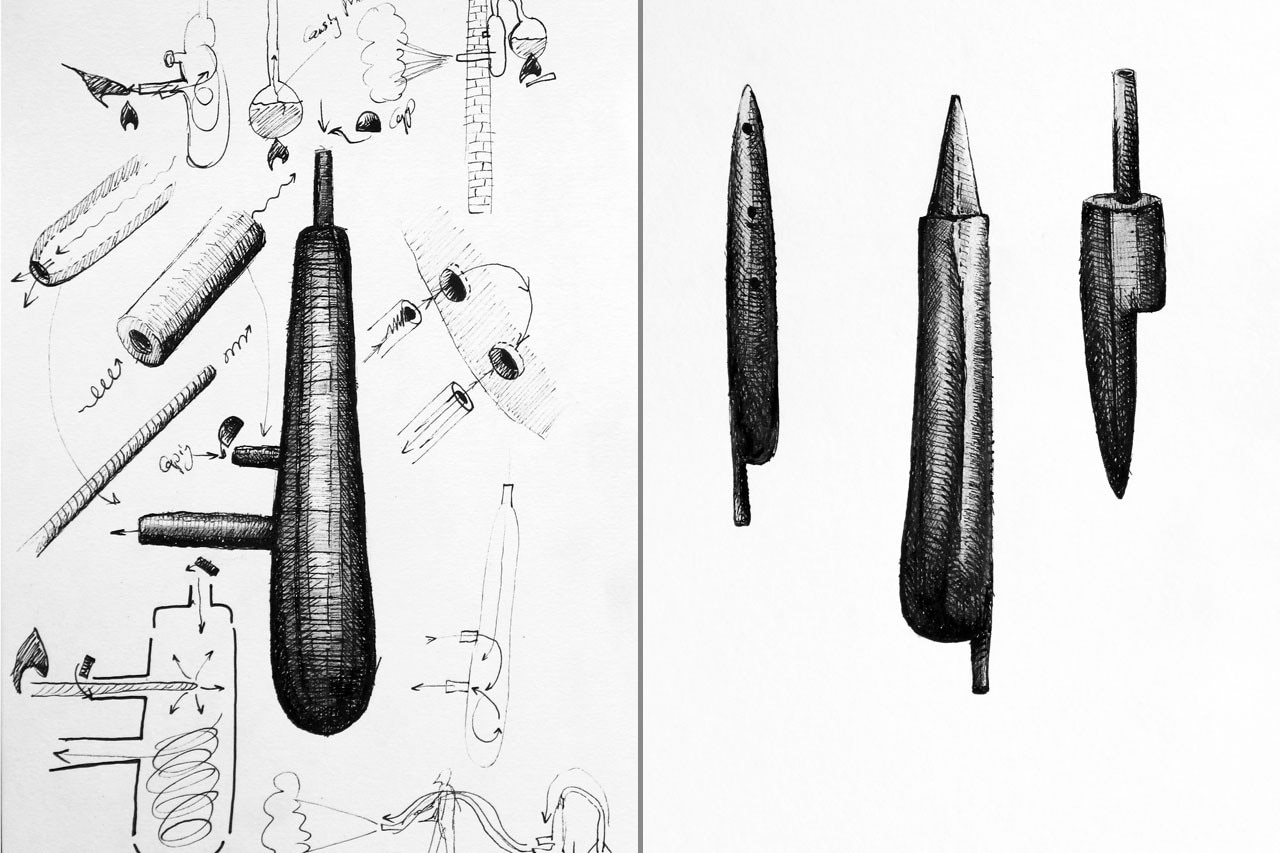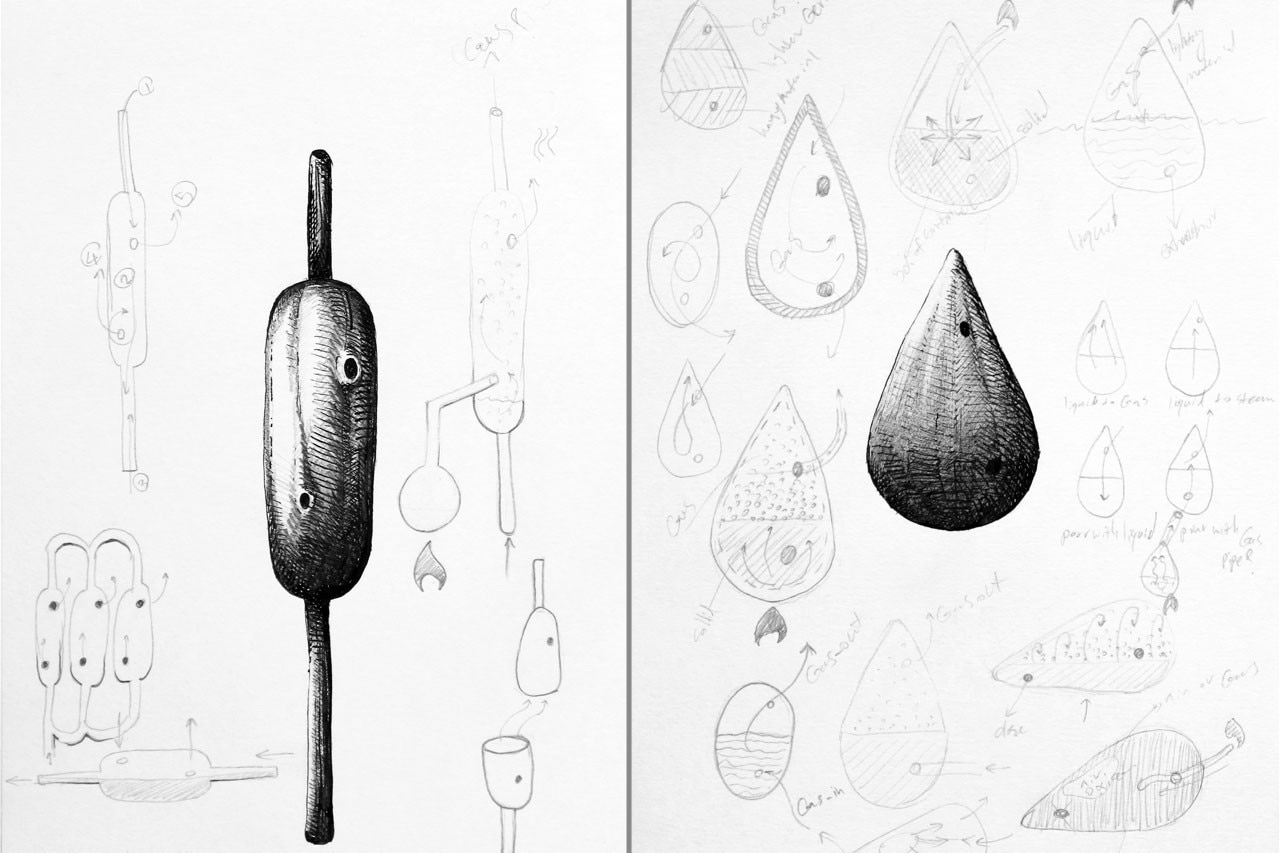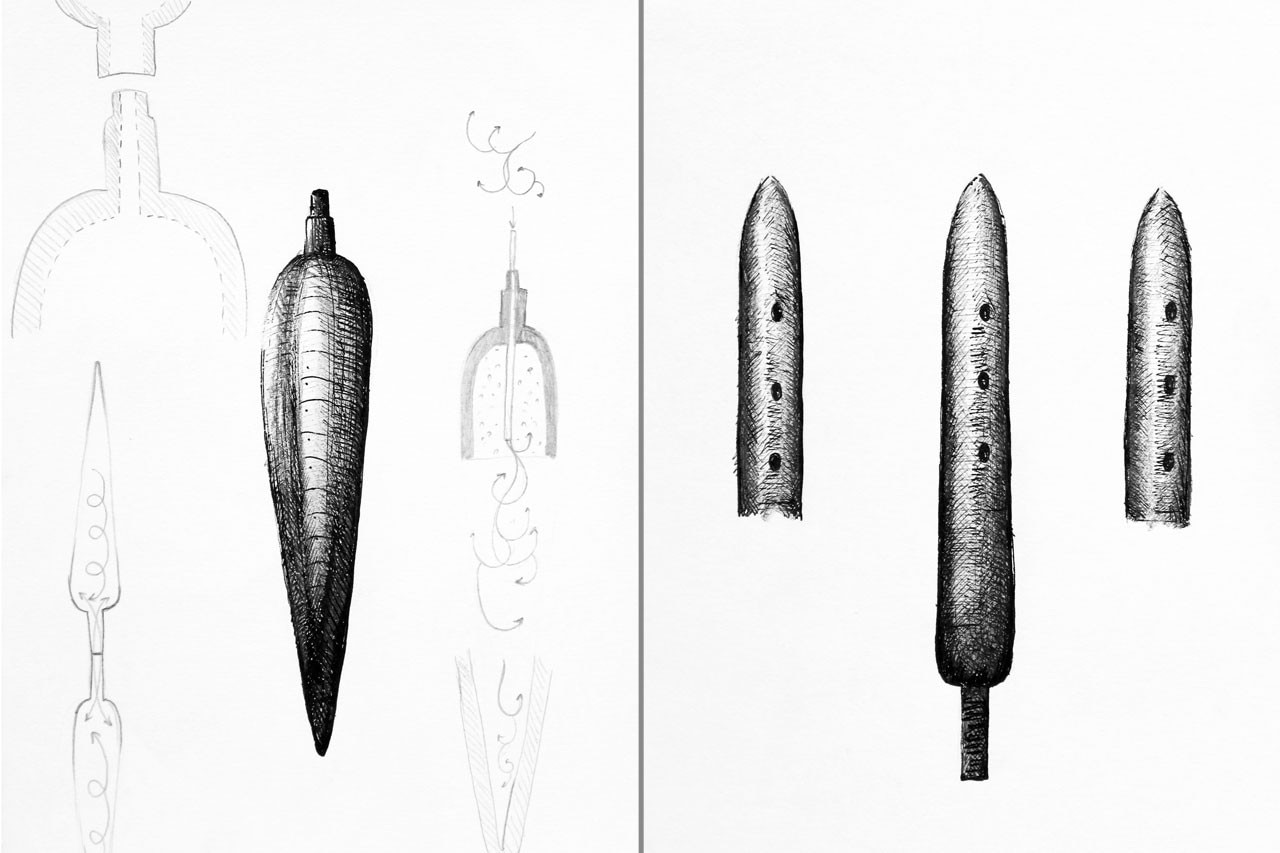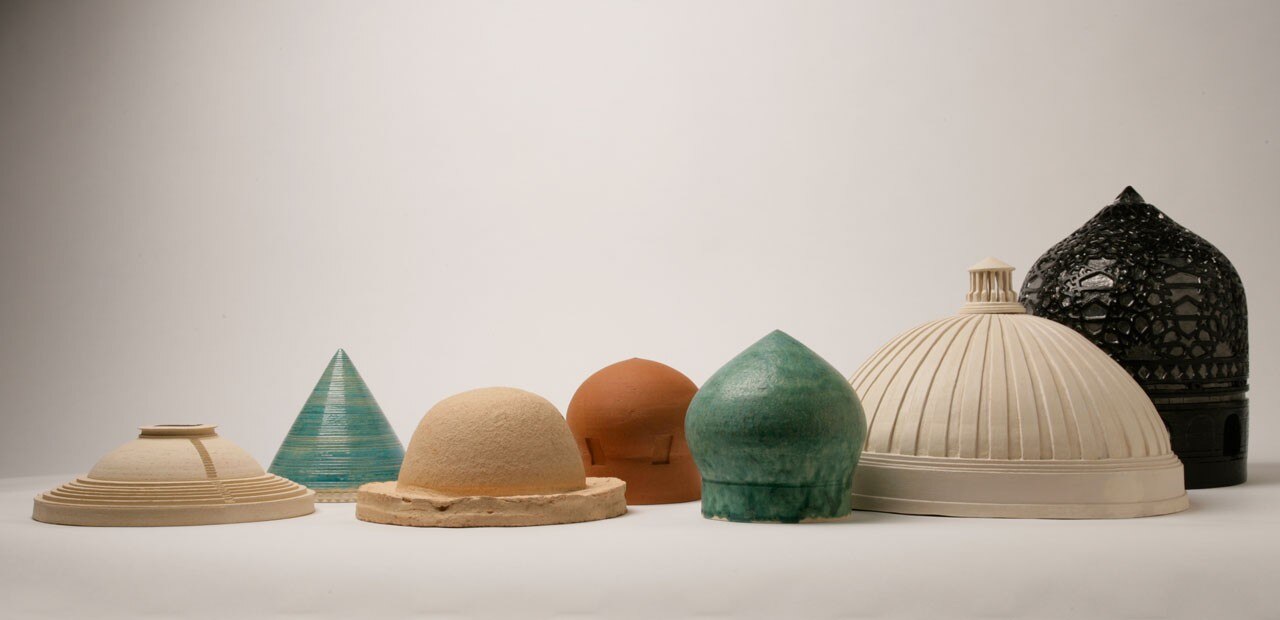
Part of an ongoing investigation into the forms and structures of power and hegemony, Pouyan’s past work repeated the phallus – as tower, hoof and missile – as a symbol of the enduring patriarchal structure of society across the Middle East.
Though many of the ceramics remain indubitably phallic they are decidedly less monumental and more thing-like in scale, reference and material. And like much of Pouyan’s previous work their final forms synthesize his far-ranging knowledge of and research into ancient mythology and religion, and histories of art and architecture, science and technology, and war and conflict.
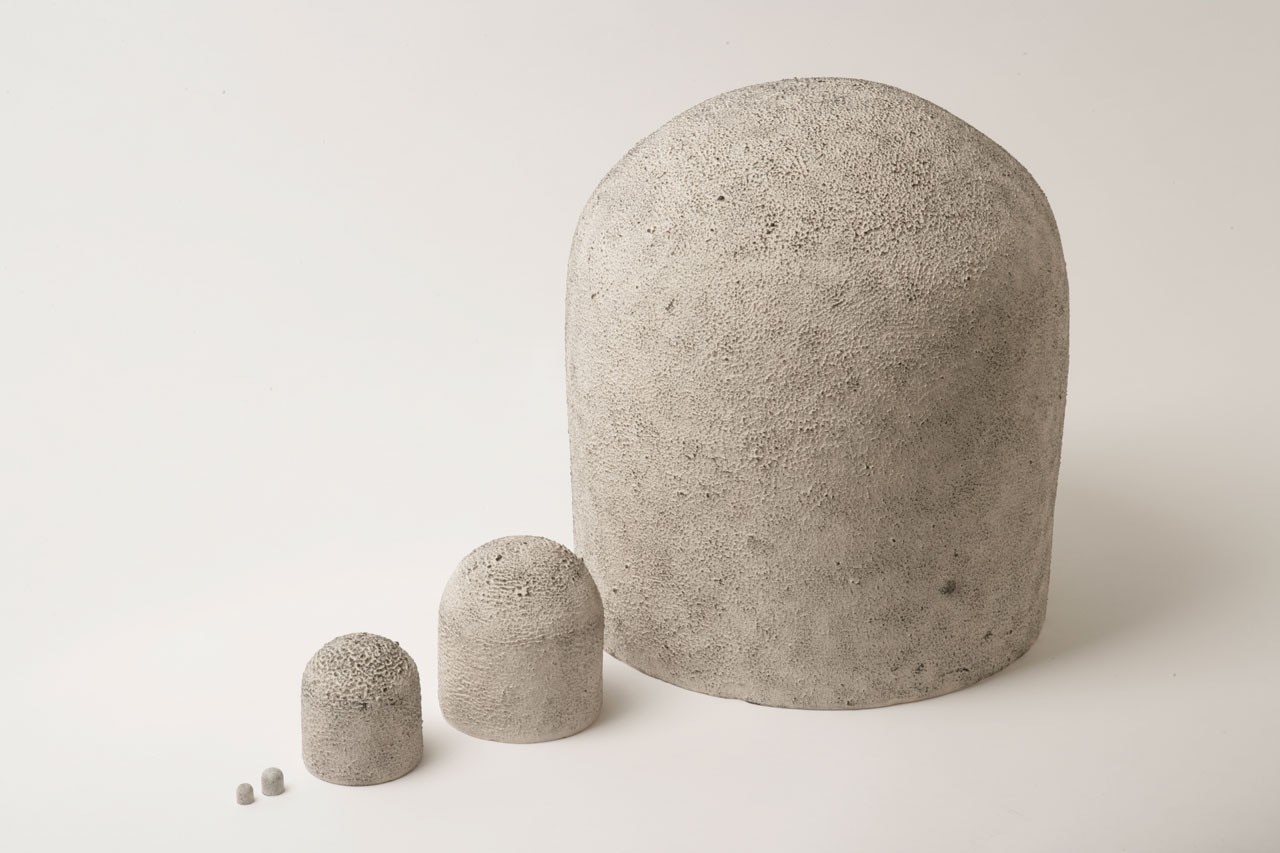
Through repetition and variation of this set of simple but suggestive symbolic forms, Pouyan investigates scale and proportion in relation to the ideologies, architectures and structures of possession, domination and destruction, both ancient and modern. One table presents a skyline of differently styled historical domes conceived purely as expressions of power, from the iconic Pantheon in Rome to the gigantic edifice anchoring Welthauptstadt Germania, the planned but never realized renewal of Berlin into the capital of Nazi Germany.
Another presents a row of six perfectly hemispherical domes, identical but ranging in size from millimeters to meters, whose shifting scale demonstrates the growing capacity of nuclear destruction through the twentieth century.
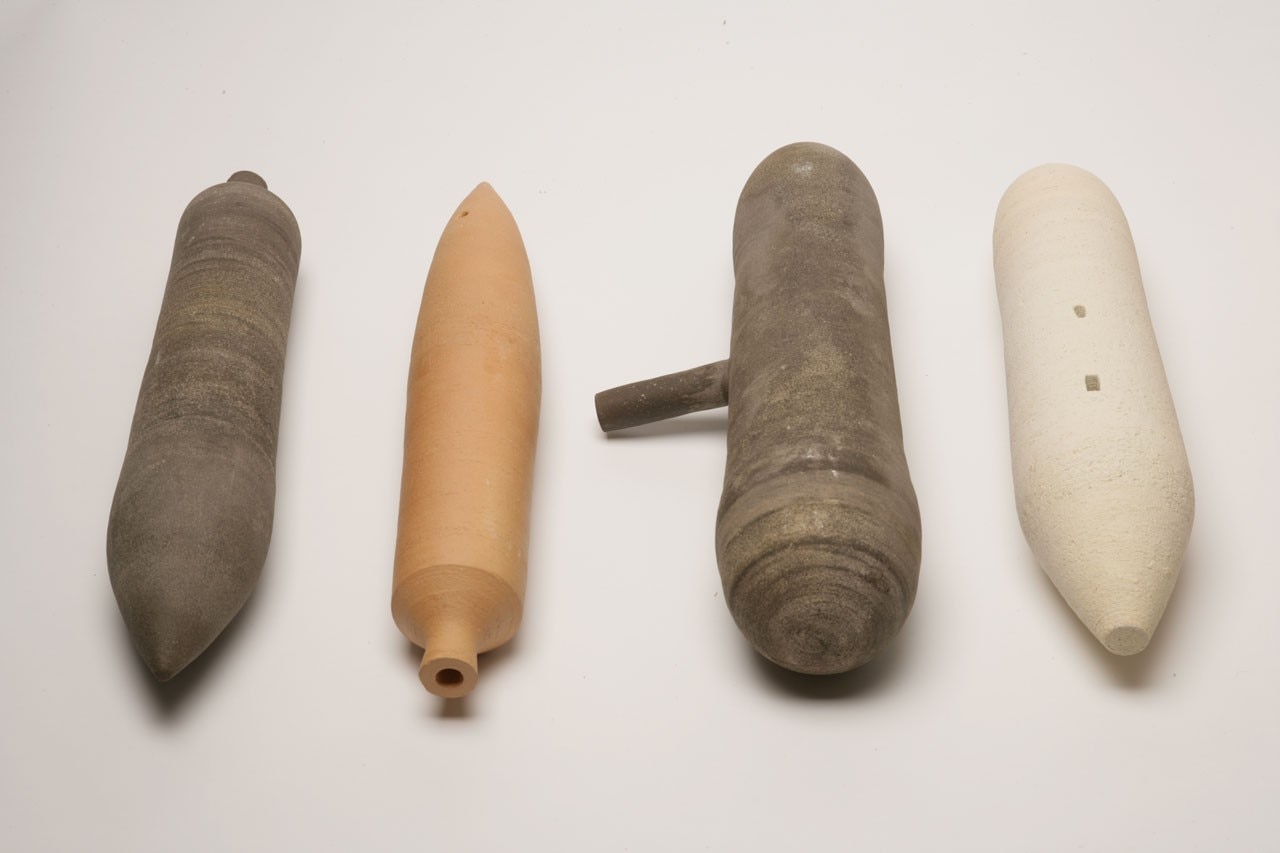
Additionally, presented alongside the artillery shells, bombs and domes are other things, more ambiguously gendered and less functionally clear – engines, batteries, jars, pipes and other “failed objects” – that introduce suggestions of containment and protection, of nurturing and vulnerability, of fertility and generation. While Pouyan’s playfully perverse object genealogies of terror and aggression seek to establish the traumatic scale of human ambition, the ratio of evil, through history, they temper this chronicle of human hubris and the destruction it enables with the hope and possibility of creation and regeneration.
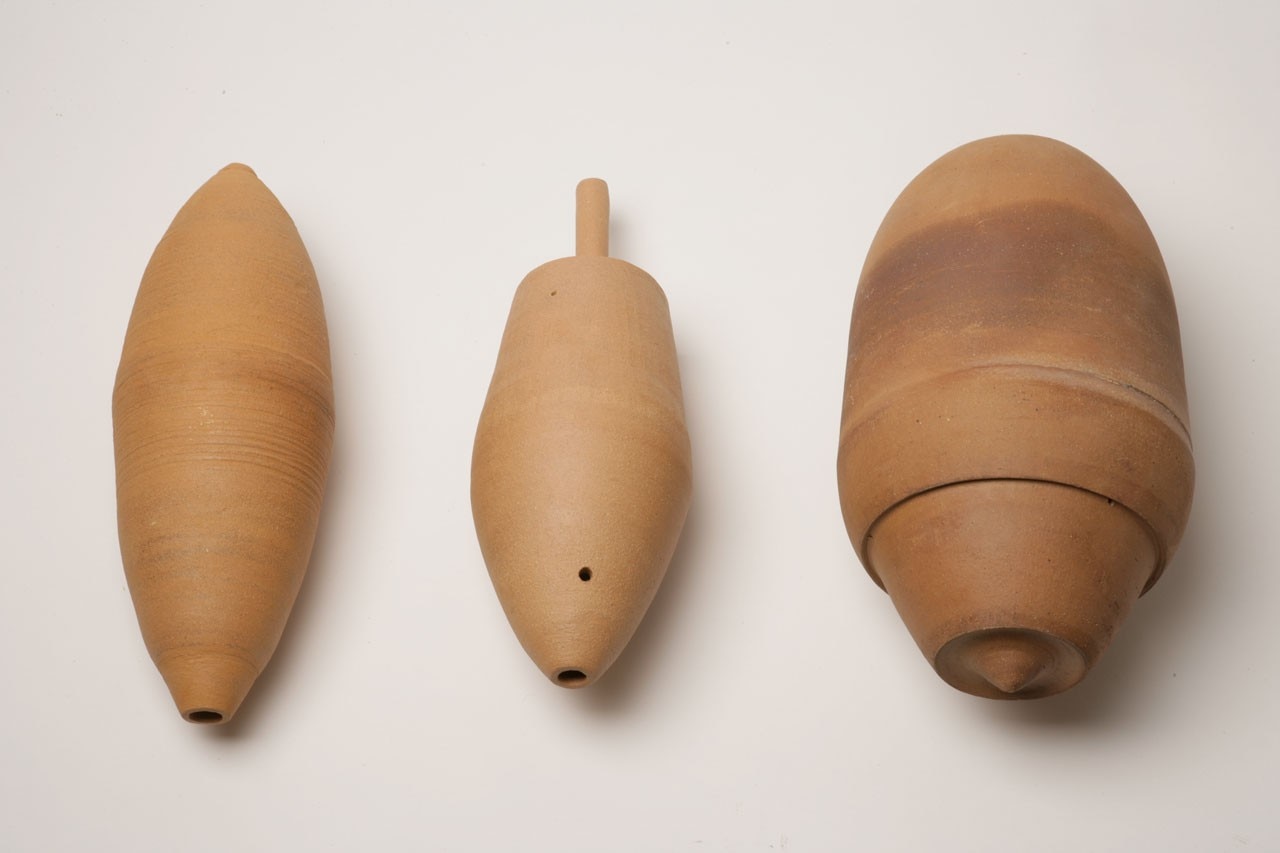
until April, 22
Shahpour Pouyan: PTSD
Lawrie Shabibi
curated by Murtaza Vali
Al Serkal Avenue, unti 21, Al Quoz
Dubai, UAE


